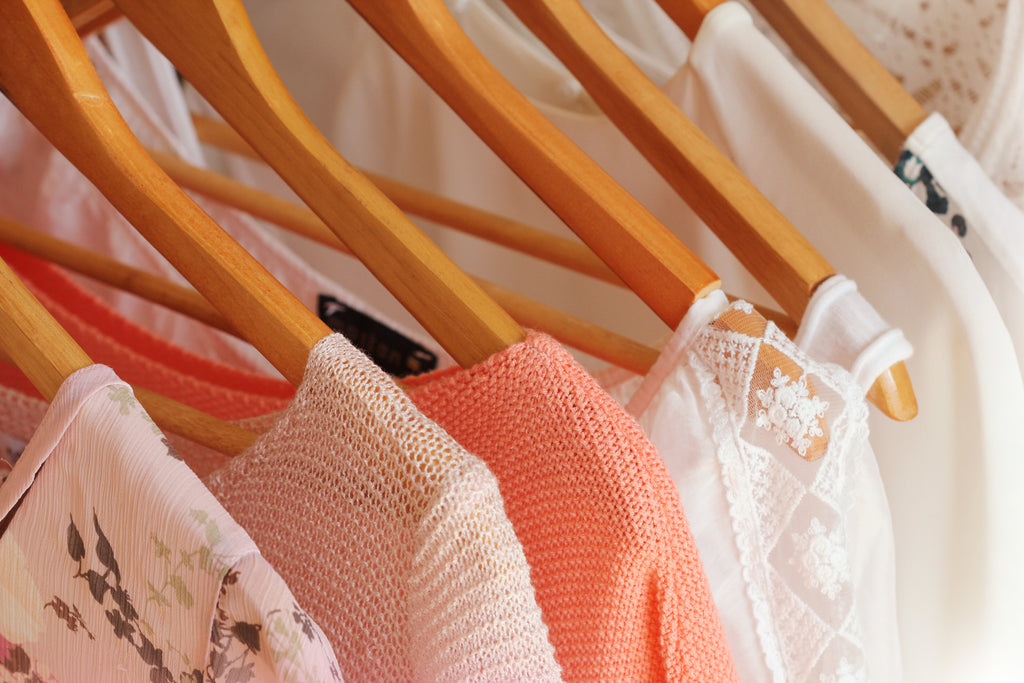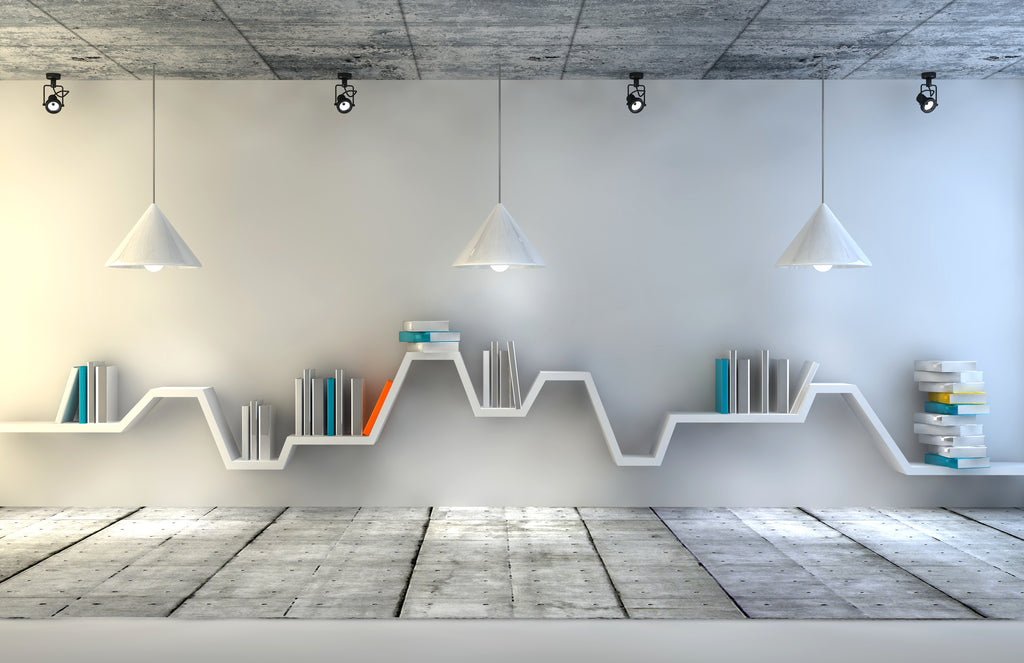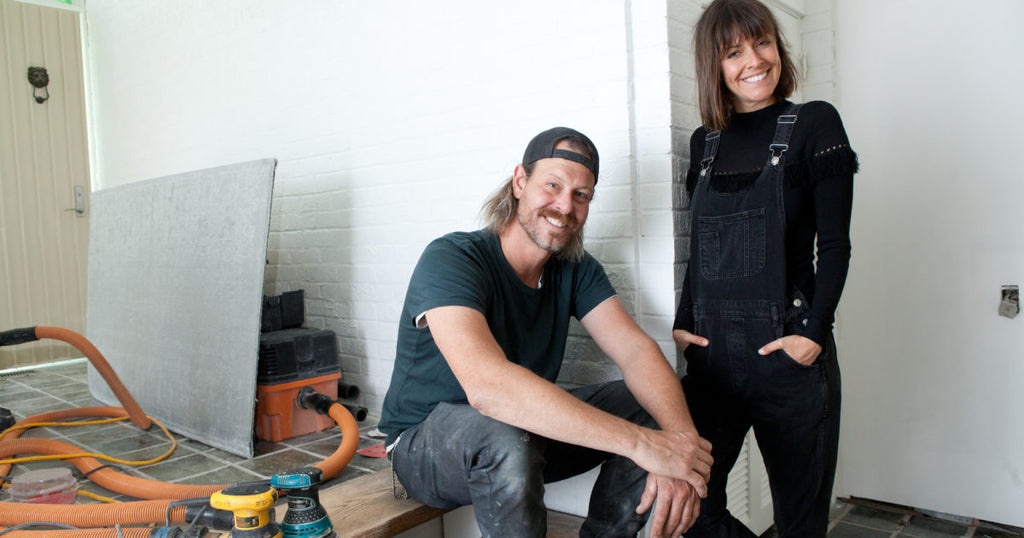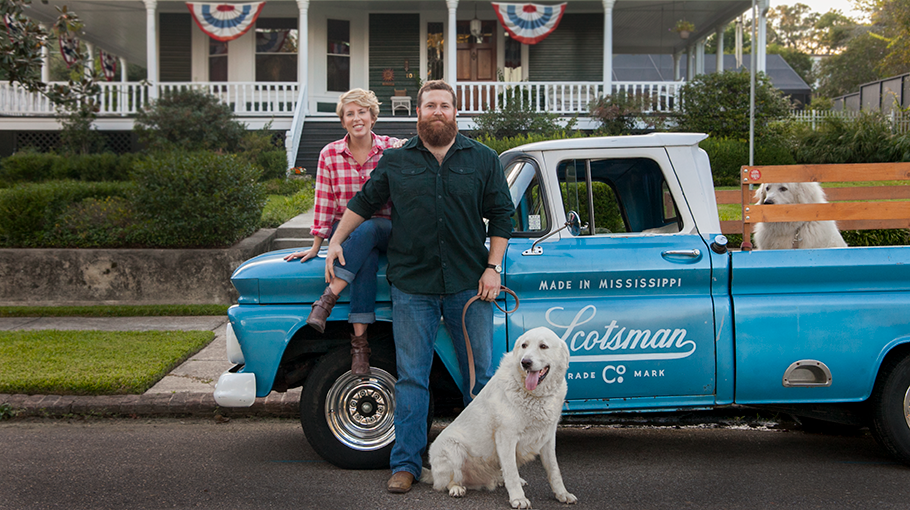Qolture Blog
Well Read: How to Incorporate Books into Your Contemporary Home Decor
Books serve as affordable, contemporary home décor any modern decorator can use. Learn how to use your favorite titles in accent home décor that will never go out of style. All about using books as contemporary home décor and modern home design. Books belong in kitchens, living rooms, dining rooms, bedrooms, foyers, hallways, and guest rooms.
Meet the Fords: HGTV’s New Brother-and-Sister Dream Team
As a child, Leanne Ford rearranged her bedroom furniture at least once a week. “In sixth grade, I convinced my parents to paint their dark wooden cabinets and avocado refrigerator high-gloss white,” she recalls. “In college, I decorated my dorms,” and in her 20s, she always made sure her living space was tastefully put together.
But despite her obvious penchant for design, “I never even thought of going into interiors,” she confesses. “It wasn’t until I actually purchased a home that it became a career option.” Nestled on three acres in a little town outside of Pittsburgh, the fixer-upper—which Ford found on Craigslist—was an old 1907 schoolhouse that had been converted into a home in the ‘60s and had since fallen into disrepair.
“We took out ‘character’ in some spots, and put it back in other places,” Ford says, noting that the renovation involved ripping out drywall to expose the original beadboard that lay beneath, and lining the walls with pine two-by-fours. “I also added a wood-burning stove, because what’s a cabin in the woods without fire?” Country Living magazine saw photos of the project, and ended up shooting it for an eight-page spread. “It was a dream come true!” Ford says. After that, “people started calling and asking me to help design their homes.”
Ford had been a freelancer working in fashion at the time and soon, she found herself juggling not one, but two careers: one in couture, the other in decor. And after five years of managing both, “it was time to pick one,” she says. “I had done everything I had wanted to do in fashion, and was ready to use all of my creative energy for interiors.”
So she began to focus on growing her interior design business, splitting her time between Los Angeles and Pittsburgh and taking jobs along both coasts. And occasionally, she and her brother, Steve—who owns his own construction business—would collaborate on projects.
Then one day, a friend of a friend who worked at HGTV reached out to the duo asking whether or not they would be interested in starring in their own series. “My whole career has been based on ‘say yes, and I’ll figure it out as I go along,’” Ford says, “so the entire time I was like, ‘sure—I’d love to talk!’”
A few emails and a Skype interview later, they landed their own series. Called Restored by the Fords, it follows the pair as they renovate old, unconventional homes in rural Pennsylvania. “The reality of something like this happening is so small—we didn’t expect it to pan out this way,” she admits. “But we certainly weren’t saying no on the way to get there.”
Here, the brother and sister reveal the best part about working with one another, offer a few home design and construction tips, and grant a behind-the-scenes look at their show (which was recently renewed for a second season, set to premiere next year).

As kids, what did you two aspire to be when you grew up?
Leanne: I wanted to be a teacher. Still might, actually! I liked chalkboards and books—both of which I work with in interiors anyway! (So maybe I’m good??)
Steve: Honestly I didn’t really have any aspirations like that as a kid—my career goals were probably to have a job where I worked outside!
Briefly describe your educational background/professional training.
Leanne: I went to Ohio University where I created my own major in order to take all of the classes I thought I would learn from. I was going into fashion at that point so I took all of the fashion classes, all of the art classes, design, advertising and PR. It was incredible!
Steve: I studied parks and recreation and tourism management at West Virginia University. All through college and after college, I did construction to pay my bills.
Leanne, why you decided to switch career paths and transition from fashion stylist to interior designer?
There was really is a major overlap between fashion and interiors. It’s about playing with proportions and lines and colors and how you put pieces together. A creative soul will always be doing that in everything, whatever their chosen medium is.
Steve, how did you get into construction?
I’ve always been a hands-on person—it just sort of came naturally.

What’s it like working so closely with a sibling?
Leanne: It’s actually really amazing. It makes our mom very happy! Steve and I definitely get into it once in a while. But the good thing about family is you have no choice but to forgive each other and move on. Plus, he eventually realizes my ideas actually are good!
Steve: I think it’s great. Leanne has a lot of challenging ideas, and that’s what I thrive on. But sometimes it takes me a minute to get on board with her ideas. Before I say yes, I just need to sleep on them.
Leanne: He always disagrees with me! That’s when I know I’m onto something new and interesting—when he says he can’t do it. But his problem is he’s really good at his job and he can always do it. So I just wait for him to figure it out in his head. Then when the project is over he always says that “impossible” idea is his favorite part of the project. It’s like clockwork!
Leanne, what inspired your signature “white on white” aesthetic? Is your interior design aesthetic reminiscent at all of your sartorial style?
I just think white is such a nice, beautiful blank slate. It’s like a big light box that makes all beautiful things glow. It also let’s the furniture and art and lighting and trinkets shine. I always say “white is the silence between the chords.”
When it comes to fashion, I like clean, simple, black, white, creme, denim…sometimes something wild, but always very comfortable.
What’s the key to successfully mixing textures and patterns?
Leanne: Stay in a color story! Then the world is your oyster. I try to keep to maybe two or three colors—four tops. And I always add vintage elements for warmth, spirit and character, as well as elements of wood and nature. It just feels good.

Name a few of your go-to places to shop for furnishings and décor.
Leanne: In Pittsburgh, there’s Garden Style Living, Weisshouse, and Tollgate Revival. And in Los Angeles, there’s Amsterdam Modern, Big Daddy’s Antiques, and The Mart Collective.
What’s the riskiest or boldest interior design decision you’ve ever made?
Leanne: I love this question, but I can’t say I have an answer for it! it’s all risky and bold, but it’s all also easy and livable and comfortable—though I do like oversized lighting. The bigger it is, the more special it is going to feel in the room.
In approaching every project, what’s the first step?
Leanne: Talking to the clients about what they want and need. Always.
When it comes to old and dilapidated buildings, is there such thing as a lost cause?
Leanne: Yes—sadly, there comes a time when it’s unsafe to keep that structure up, though in that case you can still use the remnants! But honestly, stylistically, you can make anything beautiful and interesting. You just need time and will power—oh yeah, and money.
Do you have any tips for home improvement DIYers?
Steve: Buy the larger paint rollers—you’ll paint a lot faster. Also, it’s important to hire a professional when you’re out of your element. You can really do something wrong and it can turn bad fast. We’re in this age where you can just go online and think you know it all, but that’s not necessarily true. If I second guess myself, I always look to somebody who is more educated than I do. There’s no shame in looking to someone who has more experience than yourself.
Leanne: Don’t worry about rules! I really believe in ignoring any rules you’ve heard about design, and doing what you love and what you’re drawn to. Trends are going to come and go, but it’s all about where you feel at home and how you feel comfortable. If that’s what translates, you’re going to love your house and everyone else is going to love your house. I can give you all sorts of ideas of how to do your home, and I’m happy to do that, but my biggest aim is to make sure you love your home. If everything is covered in Hawaiian wallpaper and that’s what you love, then do it!
Let’s talk about the series. How long did it take to produce the first season?
Leanne: It was about five or six months of filming a total of eight houses. It was pretty much all day, every day we were either building or designing or filming. It was a big job.

How do you pick the projects featured on the show?
Steve: Clients go through the casting agency—they narrow it down, basically—then they pass it to us, and we visit the home and meet the homeowner.
Leanne: We pick the houses based on what the project is, what the house vibe is—if it’s a natural connection, and what the budget is. There have been some amazing houses, but there’s not enough budget to do as much work that needs to be done, so we’ve had to pass on some.
Do you have any favorites?
Steve: When you’re done with a project, it’s like Christmas morning—it’s an awesome feeling. You start a job and you’re super nervous, and by the time you’re done, you walk out of there and you feel good. That’s my favorite part about it: leaving after knowing that everyone’s happy with the final product.
Leanne: We really like whatever project we’re working on. Your favorite’s whichever one you’re in. I get attached to all of them.
Steve: But if we were to purchase something we’re both really excited about, we wouldn’t be afraid to sell it and get something different.
Which Restored by the Fords project to date proved to be the most challenging?
Leanne: I have to say every project, on and off screen, has its shares of difficulties. So just like how every project I am working on is my favorite at that time, every project we are working on is difficult at that time. It’s just the nature of the career we chose. I always joke and say, “why didn’t I get into making jewelry instead of making homes?” It would be a lot less furniture moving, I’ll tell you that!
What’s it like being on camera?
Steve: To me it feels like they’re just documenting what we do. They follow us around and do the interviews, and yeah.
Leanne: We were strangely naturals. It was much easier than we expected it to be. We’re not actors—we weren’t aiming to have a TV show. We’re in the design and construction business. So it’s such an honor and such a joy to have a network like HGTV following what we do. We grew up together—we did home videos, like “Rocky XIII.” As kids you make up home videos! I was laughing one time because I swear it was like we were doing the same thing for HGTV that we had done as kids. We had Dad’s VHS that we were carrying around, making home videos. That’s why it’s easy—we’ve been doing it our whole lives!

Is your dynamic the same in real life as it is on set?
Leanne: I have to say that’s the biggest compliment our friends and fans have given us: “You guys are exactly who you are on and off TV.” We have an amazing producer and DP—they’ve made us feel really comfortable.
Steve: That’s all we have to offer—we’re not very good actors.
Is it odd, watching yourself on TV?
Steve: I’ve watched every one so far—I get terribly embarrassed, and then I don’t watch it again.
What’s next for the Fords?
Leanne: For me it’s just more work—I’ve been working on my own projects. It’s been really exciting for the show to come out, because we get to reveal all these things that we’ve had to keep under wraps for a while. But this is more than a TV show. We are building a brand here, which is beyond exciting!
About The Author

A Q&A with Home Town Hosts Ben and Erin Napier
Ben and Erin Napier might just be the most darling new husband-and-wife team on the small screen. But the couple—owners of Laurel Mercantile Co. and hosts of HGTV’s Home Town, which follows the pair as they renovate turn-of-the-century homes in Laurel, Mississippi, where they reside—have a love story that’s one for the movies.is your dym
The two first met in college when their school’s yearbook team (of which Erin was the design editor) decided to profile the most interesting figures on campus, including Ben. “When I discovered that they wanted to feature me, I jumped at the opportunity, knowing that she was in yearbook,” Ben admits, noting that he still recalls the very first time he gave Erin a hug (December 7, 2004). “Six days later, I knew I was in love with her and would marry her one day—so I told her,” he reveals. “Luckily, she felt the same way. We felt at home with each other from the day we met.”

Since then, they’ve only gotten closer. Last November, the couple celebrated their nine-year wedding anniversary—and in January, they welcomed a new baby girl, Helen, just days before the second season of Home Town premiered. “We have a weird relationship—at least, that’s what people tell us,” Ben says. “The more time we spend together, the happier we are.”
The secret to their success as a married couple? “Communication,” Erin asserts. “We’re together 24 hours a day because we feel like the strongest team that way.” Ben wholeheartedly agrees: “We are in perfect conversation with each other—we communicate about every little detail of our lives,” he says. “Talking about everything and prayer are the glue in our marriage.”
Here, the duo reveal how they got their start in home renovation, how they landed their very own show, and their favorite words to live by.
What was it like, growing up in Mississippi?
Erin: I grew up five minutes outside the city limits of Laurel, on my family’s farm. I had never lived anywhere else before going to college. My days were spent working on art projects with mama, or building tents with my grandparents, or exploring parks in town.
I wanted to get out of south Mississippi and attend school at Flagler College, a tiny school in St. Augustine, Florida. I was waitlisted despite having a 4.0 GPA. So, reluctantly, I attended Jones County Junior College, where I had so much fun and met Ben.
Ben: We lived in Collins, Mississippi, when I was first born, but as a United Methodist minister’s family, we moved around a lot. I finished high school in North Carolina before attending Jones County Junior College. After meeting Erin, we decided to go to Ole Miss together. We both graduated in 2007.
How did you each get your start in home renovation?
Erin: Around 7th grade, my mom let me totally redesign my room however I wanted. We spent a weekend painting, hanging wallpaper, picking new furniture. It is one of my favorite experiences. As a kid, I didn’t scrapbook or plan for my wedding—I planned for my dream house. I would take my mom’s home design magazines and clip out my favorite images and dream of designing a house one day. So I suppose I would say that my love for home design started during childhood, and my mama and I approached it just like any other fun art project. That has been the hallmark of my work ever since—interior design, graphic design; it’s all the same thing. It’s storytelling in a visual way.
Ben: When we got engaged, we set about designing our first home. We were both broke, working our first jobs out of college, and we renovated a loft in downtown Laurel. I got my start in woodworking out of necessity: I had a wife with great taste and a small budget.

What’s the best part about living in Laurel, Mississippi? What sets it apart from other small towns in the South?
Ben: Laurel is unlike most small southern towns I’ve lived in or visited. It’s a very industrial town that was founded in the late 19th century. The founders were educated and cultured, two things that became a part of their industrial town. Laurel is as much industrial blue collar as it is artistic and creative.
What do you think it’ll take to fully revitalize Laurel?
Ben: Perception. For outsiders looking in, Laurel is an incredible town. For some of our insiders who’ve been here forever, it’s dead and never coming back. No town or city is perfect—every place has its own unique problems, but a city thrives when we begin to take pride in what we’re doing right.
Talk about why all of Laurel Mercantile Co.’s furnishings are handmade locally, and what “Made in the USA” means to you.
Talk about why all of Laurel Mercantile Co.’s furnishings are handmade locally, and what “Made in the USA” means to you.
Ben: I grew up in small towns in Mississippi and North Carolina. I’ve done manual labor alongside some of the hardest working and smartest people in the world. All over America, there are small towns with empty, dilapidated warehouses and factories. The people in those towns have either left or are scraping by. Without American manufacturing, small towns can’t survive. Granted, there are farm towns that will be successful as long as there are farmers to support them. Towns like Laurel, however, need that industrial base.
With regards to your brand’s furniture line, Scotsman Co., do you have a hand in crafting all of the pieces?
Ben: Absolutely. Everything with the Scotsman Co. stamp is designed or built by me. I started the brand on my own a few years ago. It’s almost as important as my name.
How has living in small-town Mississippi shaped your design aesthetic?
Erin: Our style is collected, layered, traveled, and comfortable. I would probably label it something like “eclectic traditional.” It’s very much the story of Mississippi, using whatever you have to make art—our homes are like that!
Which Laurel Mercantile pieces can be found in your own house?
Erin: The majority of our products are designed out of necessity. Ben and I, or one of our partners finds something that we need, or we think of a way to improve something. So, we meet about it and work with manufacturers to develop our products. I have our cutting boards and kitchen towels in our kitchen. I use our vintage silverware for serving. My Scotsman Co. dinner table has a Laurel Mercantile grain-sack runner. Our products are scattered throughout our home.
Erin, what prompted you to start a daily blog? Did you launch it with an audience in mind, or was it initially just meant for you?
I decided to write Make Something Good Today, my daily journal, as a remedy to assuage the worry and negativity that comes so naturally to me, the day I started my own company and became totally self-employed on January 1, 2010. I committed to writing down at least one good thing that happened every single day of our life, and it changed my life. I started looking for the good instead of waiting for the bad to happen. It was like looking at life through rose-colored glasses by habit, which was very good for me.
I never imagined anyone reading it besides my mom and Ben. But committing to writing it in a public way held me accountable, so I kept doing it day after day. I didn’t want my mom to ask, “Why didn’t you write today?”
What’s the story behind how you two landed your very own show?
Ben: I had just resigned from my position as full-time youth director at our church after feeling that I was aging out of it, and my heart wasn’t in it like it needed to be anymore. So, we were in a state of “have we done the right thing?” when we received an email from HGTV’s Lindsey Weidhorn, asking if we’d ever considered being on TV. It didn’t feel like it would actually happen, but it felt like an affirmation that I had done the right thing.
Erin: We agreed that we would have fun with it and see where it went. Once it came to the point of no return, we knew we had to do it. It was less about this huge opportunity for our family, and more about shining a positive spotlight on our town and our state.
How did the making of Home Town impact your relationship/work dynamic?
Erin: We had to become very regimented. As small business owners, our schedules had always been very scattered and flexible. We might be working on a project at 1:00 in the morning, and then have a coffee meeting with a client at 8:00 am. We made our own schedules. With filming, our schedule is made for us. Every minute of every day has been planned for us.
How does the show’s second season differ from the first?
Ben: The viewers get to see more of our processes. Erin gets to paint in her art studio a little bit, while we spend more time filming in my woodshop. Viewers will also see us getting to know the homeowners on a more personal level, something that is really important to us in designing a home.
Are there any Season Two episodes in particular that excited you?
Erin: We got to work with some small business owners from downtown Laurel this season. One of them was featured in a shopping scene in season 1. We were able to help them with a completely different style of home from what they’ve been living in. In that episode, Ben gets to work on a surprise for me and Helen. It’s the most beautiful thing he’s ever built.
Which Home Town project has been your favorite thus far?
Erin: I would say they’ve all been memorable and unique. As far as the houses go, Jodi and Bill Holloway’s home has been a favorite of mine. The house was in really sad condition, and they’re good friends of ours, so it was doubly exciting. Anytime I can work with my mom or our friends on a project, those stand out. I love seeing Ben and Jim and Josh going out on their excursions because it's just like real life with them.
What’s the easiest (and most economical) renovation project homeowners can take on themselves?
Ben: Anything DIY is always going to be the most economical. Painting rooms or cabinets can really transform a home. Painting a kitchen, walls and cabinets, then changing out cabinet hardware can add a lot of value and personal accomplishment to a home. If you want to take it another step that’s affordable and transformative, you can order new cabinet doors from a company like Morgan Brothers Millworks here in Laurel.
What’s one interior design project homeowners should always leave to the professionals?
Erin: I’m afraid of all things electrical and always vote to phone that work in! But design-wise, I don’t think there’s much you should be afraid of tackling yourself. Except maybe refinishing a bathtub. Call the pros for that!

Congrats on the new baby! Talk about what it’s like having to juggle taking care of a newborn on top of the family businesses.
Ben: Luckily, the new year is always a slow time in retail. So, we’ve been able to spend a lot of time at home with her. We have been doing a lot of conference call meetings and interviews.
Erin: Honestly, she is easier than we thought. Right now, she sleeps and eats. She is a little angel baby. However, we are struggling with cabin fever. We never turn on our TV and are rarely at home between the hours of 8:00 am and 8:00 pm. So 24 hours a day at home, lots of movies and TV, and not being able to go anywhere to keep her safe from this year’s crazy flu season has us at our wits’ end!
Can fans expect to see Helen on the show in future seasons?
Ben: We aren’t so sure about that. We want her to grow up with as normal of a childhood as possible, the way we grew up.
If you could turn back time and relive a single moment, what would it be?
Erin: I would probably go back to the week we met in 2004. I wouldn’t change anything about it, though. I’d just like to fall in love with Ben again. It was the most magical week of my life.
Ben: I’d want to relive 2010, the first year of Erin’s self-employment. Getting to see her blossom as an artist and the traveling we did together all over again would be incredible.
What are your favorite words to live by, and why do you subscribe to them?
Ben: “Do the best you can, and don’t worry about it.” That’s really all any of us can do.
Erin: “Bloom where you’re planted,” because each of us has some skill or gift specific to us and no one else. Our communities thrive and grow when we all use those gifts together, in tandem. Also, “fake it ‘til you make it!” Act as if you’re the professional you want to be until someday you become that. It’s the art of practicing confidence.
What’s next for the Napiers?
Erin: There are a lot of big projects that we can’t discuss yet. We are constantly working on something. Small projects can be as important as big ones. One big one is we are wanting to expand our companies. We want to take on more manufacturing and begin wholesaling our products all over the country, but we’re taking baby steps!
Ben: It’s a dream of mine for Scotsman Co. products to be available in stores in all 50 states.
At the end of the day, the most important thing in life is…
Ben: Family. Nothing is as important as the ones you love.

About The Author






